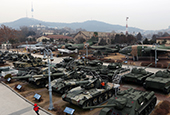Memories of wars that took place in Korea from the 19th century, during the late Joseon period, through to the modern era are being contemplated and revived at the War Memorial of Korea in downtown Seoul, with a recently opened exhibition dedicated to the relics of war. The donation room, located on the third floor of the museum, is adorned with 2,044 war-related items, all donated by 899 former soldiers who wished to share their memories with the next generation.
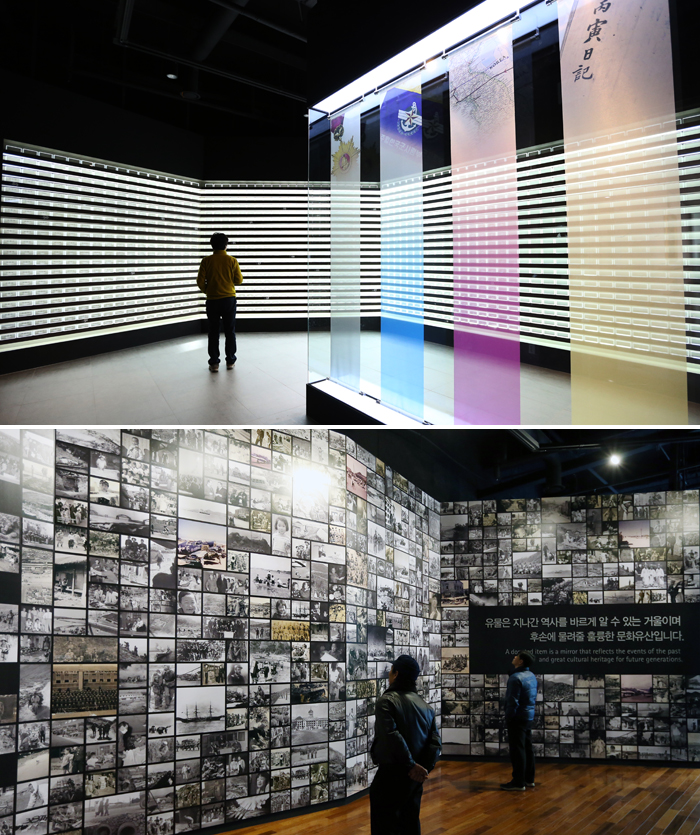
Stepping into the first section of the exhibition, viewers encounter some artifacts that belonged to General Yang Heonsu (1816-1888), representing the Joseon Dynasty (1392-1910). On display include a variety of items, including his byeonginilgi, or war diary, as well as some royal edicts awarded to him by King Gojong (r. 1863-1907). General Yang is the commander who found victory on Ganghwado Island against the French in 1866, despite having inadequate forces and equipment. Adding a personal touch to the exhibit, his famous words, “Upon riding a horse, I forget about my home. Upon marching out of the fort, I forget about myself” (“Sang-ma-mang-yu-ga, chul-seong-mang-yu-sin”), are engraved on the wall.
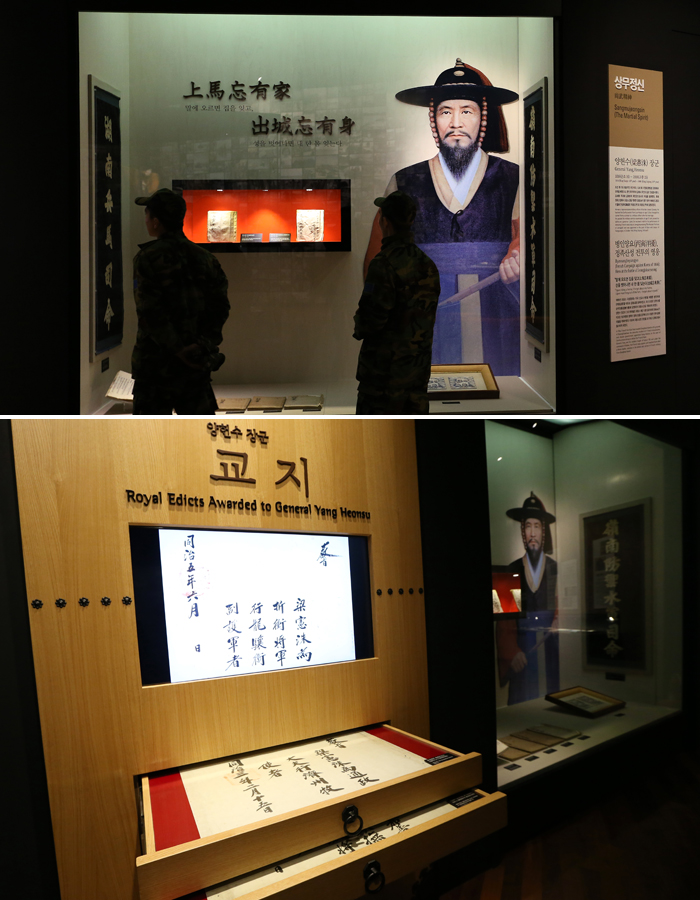
Visitors are then led to the next section, dedicated to the Korean War (1950-1953). Various items used by Korean and UN soldiers are on display. In addition to some hand-worn daily items, including a flashlight, binoculars and a water bottle, more eye-catching items are also showcased. There is a colorful scarf decorated with a quote from the folk song “Arirang,” presumably purchased by a UN soldier to give to his loved ones back home, and also an old Korean flag marked with the message, “Let’s fight it out.”
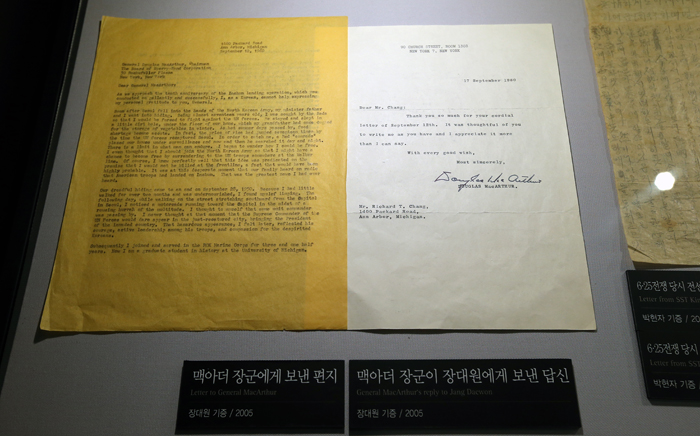
It is also impressive to see the letters exchanged in September 1960 between student Jang Dae-won, who was by that time majoring in history at the University of Michigan, and General Douglas MacArthur, the chief of the United Nations Command during the Korean War. In his letter, Jang expresses his gratitude to General MacArthur for his courage in bravely carrying out the Incheon landing, an operation that saved Jang’s life and that of many refuges in Incheon. In return, General MacArthur replied saying, “It was thoughtful of you to write me as you have and I appreciate it more than I can say.”
Moreover, there is an x-ray photograph of a soldier with a bullet in the middle of his brain. The soldier had the bullet lodged in his head for the rest of his life, after a gunshot wound to the head during the battle of Hill 67 in Jangdan, Gyeonggi-do (Gyeonggi Province), in 1952. The actual bullet was eventually removed and it, too, is on display, bringing to life the reality of battles passed.
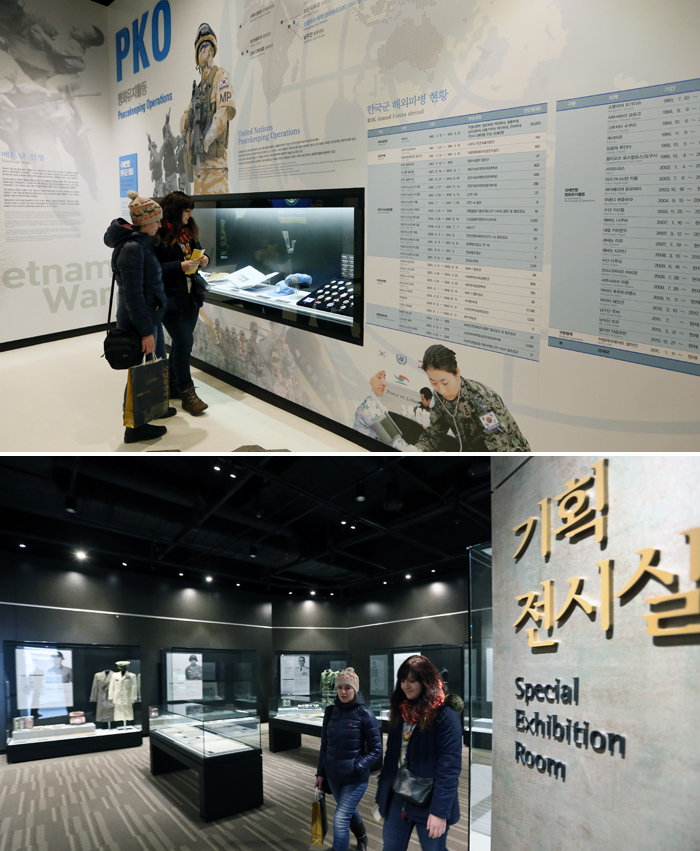
After visiting the exhibition, Russian tourist Daria Chabrova said, “It is amazing to see such an extensive volume of historical relics together in one place after so much time. I was impressed to see that the different generations can communicate with each other and be united through historical items donated by the older generation.”
In the final section of the exhibition, visitors learn through a video that donating one’s mementoes and artifacts is an act of sharing history. In the video, Korean soldiers explain how and why they decided to donate their war items and relate stories from the Korean War. Visitors can choose either Korean or English subtitles.
The War Memorial of Korea can be reached on foot in five or six minutes from Exit 11 or 12 of Samgakji Station along subway line No. 4.
More information is available at the War Memorial of Korea’s website:
https://www.warmemo.or.kr/eng/main/main.jsp
By Lee Seung-ah
Korea.net Staff Writer
slee27@korea.kr

(Top) The exhibition begins with the names of the former soldiers who donated their memorabilia and artifacts; (bottom) War-related photographs are on display at the entrance to the exhibit, reviving vivid memories of the past. (photos: Jeon Han)
Stepping into the first section of the exhibition, viewers encounter some artifacts that belonged to General Yang Heonsu (1816-1888), representing the Joseon Dynasty (1392-1910). On display include a variety of items, including his byeonginilgi, or war diary, as well as some royal edicts awarded to him by King Gojong (r. 1863-1907). General Yang is the commander who found victory on Ganghwado Island against the French in 1866, despite having inadequate forces and equipment. Adding a personal touch to the exhibit, his famous words, “Upon riding a horse, I forget about my home. Upon marching out of the fort, I forget about myself” (“Sang-ma-mang-yu-ga, chul-seong-mang-yu-sin”), are engraved on the wall.

Spectators take a look at General Yang Heonsu’s personal artifacts. Yang was one of the great commanders of the late Joseon Dynasty. (photos: Jeon Han)
Visitors are then led to the next section, dedicated to the Korean War (1950-1953). Various items used by Korean and UN soldiers are on display. In addition to some hand-worn daily items, including a flashlight, binoculars and a water bottle, more eye-catching items are also showcased. There is a colorful scarf decorated with a quote from the folk song “Arirang,” presumably purchased by a UN soldier to give to his loved ones back home, and also an old Korean flag marked with the message, “Let’s fight it out.”

On display is a letter sent by student Jang Dae-won to General Douglas MacArthur, and the general’s reply. (photo: Jeon Han)
It is also impressive to see the letters exchanged in September 1960 between student Jang Dae-won, who was by that time majoring in history at the University of Michigan, and General Douglas MacArthur, the chief of the United Nations Command during the Korean War. In his letter, Jang expresses his gratitude to General MacArthur for his courage in bravely carrying out the Incheon landing, an operation that saved Jang’s life and that of many refuges in Incheon. In return, General MacArthur replied saying, “It was thoughtful of you to write me as you have and I appreciate it more than I can say.”
Moreover, there is an x-ray photograph of a soldier with a bullet in the middle of his brain. The soldier had the bullet lodged in his head for the rest of his life, after a gunshot wound to the head during the battle of Hill 67 in Jangdan, Gyeonggi-do (Gyeonggi Province), in 1952. The actual bullet was eventually removed and it, too, is on display, bringing to life the reality of battles passed.

Tourists Daria Chabrova (right) and Tatiana Zaremba look around the exhibition. (photos: Jeon Han)
After visiting the exhibition, Russian tourist Daria Chabrova said, “It is amazing to see such an extensive volume of historical relics together in one place after so much time. I was impressed to see that the different generations can communicate with each other and be united through historical items donated by the older generation.”
In the final section of the exhibition, visitors learn through a video that donating one’s mementoes and artifacts is an act of sharing history. In the video, Korean soldiers explain how and why they decided to donate their war items and relate stories from the Korean War. Visitors can choose either Korean or English subtitles.
The War Memorial of Korea can be reached on foot in five or six minutes from Exit 11 or 12 of Samgakji Station along subway line No. 4.
More information is available at the War Memorial of Korea’s website:
https://www.warmemo.or.kr/eng/main/main.jsp
By Lee Seung-ah
Korea.net Staff Writer
slee27@korea.kr
